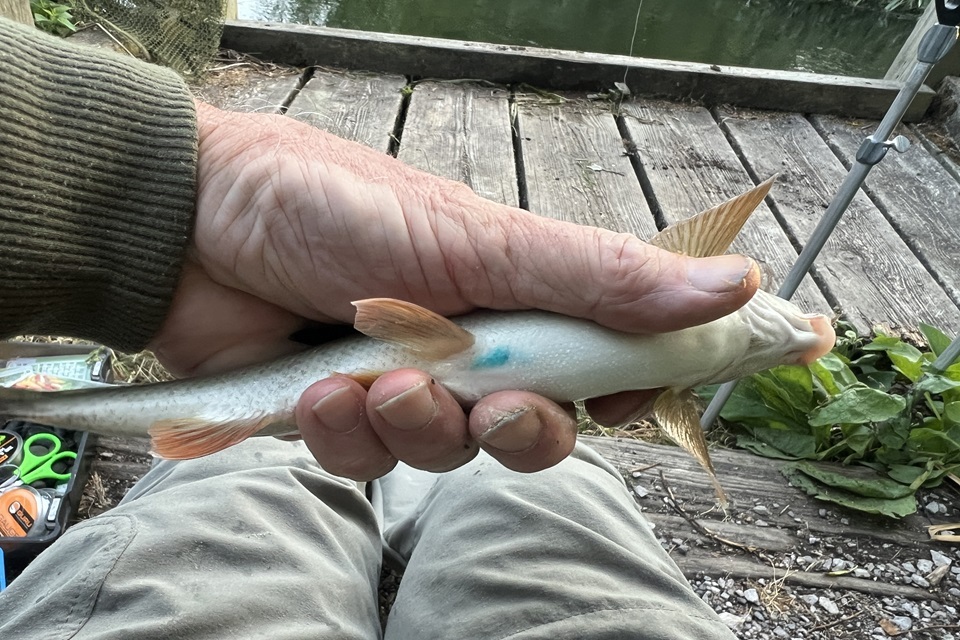Last November, fisheries staff from the Environment Agency released 1,000 juvenile barbel into the River Lea at Kings Weir and Fishers Green as part of a project to help restore historical populations of barbel in the Old River Lea.
The fish were sourced from the Environment Agency’s National Coarse Fish Rearing Unit, funded by rod licence income.
Report barbel catch to help research
However, the Environment Agency ‘tattooed’ the fish with a blue mark and request that anglers report any captures of marked barbel.
This helps the Environment Agency gather important information on their survival, growth rates and how far the fish are moving up and downstream. They ask that any photos should be taken on both sides of the fish and a record of the length and weight if possible.
This information will help show how successful the stocking is compared with natural breading within the river. The new juveniles will also help increase the natural stocks of barbel in the River Lea in the long term.
Responding to declining fish stocks
Environment Agency fisheries team leader Richard Tyler said
We’ve responded to concerns of anglers about declining fish stocks, including barbel, and this project will give us some good data to monitor barbel populations.
The work will also help anglers, and ourselves, increase our knowledge of fish populations in the river, growth-rate and just how far up and downstream the barbel migrate. It will give us great information on how well they are thriving.
If you catch a barbel from the Lea with the blue mark, let the Environment Agency know by emailing hnlfm@environment-agency.gov.uk with a photo, location and size and weight of the fish.
Hot and dry weather has also led to had led to a significant drop in dissolved oxygen levels, which has resulted in fish mortality. If you see fish in distress or have concerns about possible pollution, please call the Environment Agency incident hotline on 0800 80 70 60.
Background
- All 1,000 barbel that was released have a blue dye mark between the pectoral fins. It is an ‘alcian’ blue dye that has been used as a method in fish-marking projects all over the world. The process of marking is not harmful to the fish.
- Barbel are a popular sport fish amongst anglers. In the last 30+ years, Environment Agency electrofishing records suggest numbers of juvenile barbel have declined in the Old River Lea, due to a number of different factors. The river now produces fewer but far larger fish. Last year, a 22lb 1oz barbel was caught from Kings Weir Fishery, beating the UK barbel record by 15oz.
- All rod licence income is used to fund work to protect and improve fish stocks and fisheries. You can buy your rod licence online.
- Every year, the Environment Agency stocks almost half a million fish of nine different species into England’s rivers.
- To help crack down on fisheries crime, the Environment Agency urges anyone to report illegal fishing and other offences by calling 0800 80 70 60.
- Fishing illegally can incur a fine of up to £2,500, and offenders can also have their fishing equipment seized.
- The Environment Agency inspects rod licences throughout the South East, and works continually on cases of illegal fishing and other associated fisheries crime.
Journalists only 0800 141 2743 or communications_se@environment-agency.gov.uk

